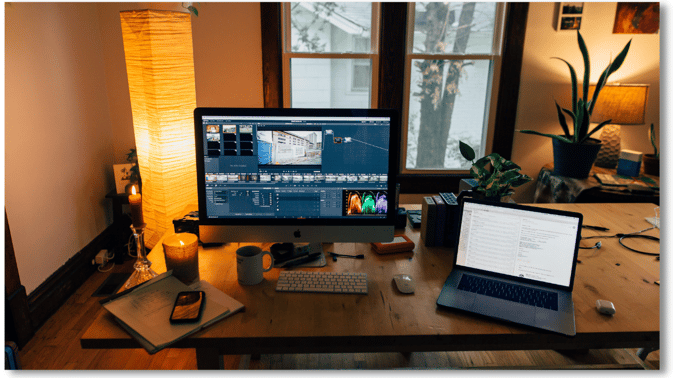
Have you noticed that social media platforms are constantly becoming more similar?
Instagram and Youtube recently added features that emulate directly TikTok’s user experience. And a few years ago, Instagram, LinkedIn and YouTube copied Snapchat’s ephemeral messaging. This is not new, as social media platforms are constantly rolling out almost identical features in an effort to increase their user engagement.
Interestingly, all of these new features in the past few years have something in common: they're all focused on video.
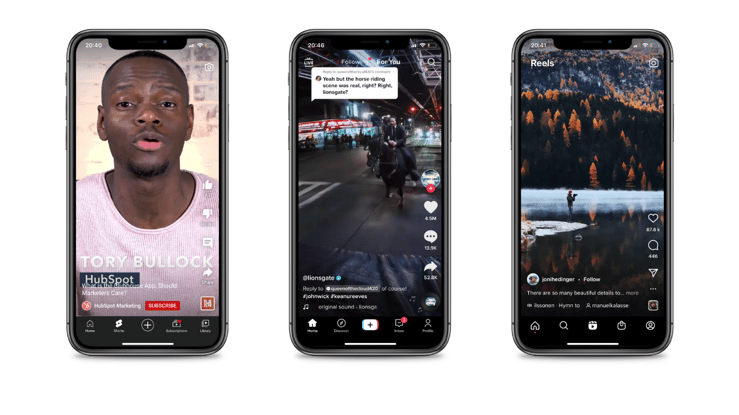 Youtube Shorts vs TikTok vs Instagram Reels. Can you tell the difference?
Youtube Shorts vs TikTok vs Instagram Reels. Can you tell the difference?
It’s no news that video is quickly dominating online interactions between brands and consumers, and driving the development of new features. Even though social media platforms are becoming quite similar, the user experience and targeting tools they provide is quite different. So if you’re considering advertising in these platforms, you need to know how to optimize your content to get the best results on each.
In this post, we’ll focus on the three most important video platforms -Instagram, YouTube and TikTok- and show you how to optimize your video ads for each one of them.
Video Best Practices
Most of the videos that you'll create for these platforms are 30 seconds or less. To properly convey your message in such a short period of time, you need to use the following best practices. Keep them in the back of your head as you think what content to create.
-
Cut to the problem you solve: With so much content to scroll through, people will spend a fraction of a second looking at your videos and decide whether it's worth watching or not. By cutting directly to the problem you solve, you establish common ground and pique their curiosity to keep watching.
-
Use text: Most of the content on social platforms is initially watched on mute, so you should add text to help drive your main message home.
-
Add an ending call-to-action: If your audience has made it to the end of the video, they're clearly interested in your brand. Put a clear and big call to action that invites them to take a next step in your funnel.
Now you know the best practices to create short form videos in social media. But how do you make the most of each platform?
Most marketers simply repost the same content across their social media platforms. That's ok...if you don't have a ton of time or resources.
But, if you want to see the best results from your videos, you need to match the content and type of audience that make that platform unique.
Let's explore each social media platform.
Instagram:
Instagram is one of the biggest platforms out there with over a billion users engaged monthly. Although it initially started as a photo sharing app, it's now making video a main priority with features like Stories, Reels, and IGTV. Instagram constantly introduces new features and changes to their user interface, which is a great opportunity for you try them and surprise your audience.
You’ll find 3 types of ads that work great with video: Stories, In-feed, and Reels.
-
Stories ads: They are full screen, vertical videos that appear between other Stories from the accounts you follow. You can find them on top of your news feed.
-
According to Instagram, 50% of consumers report visiting a website after watching a Stories ad.
-
The videos can be up to 15 seconds long, and you can benefit from adding stickers and swipe up actions.
-
If you want to increase engagement, you can use a carousel made of multiple 15 sec videos.
Stories carousel. Notice the bar on the top how the ad is actually made of 2- 15s videos for higher engagement.
-
In feed ads: They are square or vertical videos that appear along regular posts as you’re scrolling through your news feed.
-
They can be longer than Stories, up to 60 mins long, giving you the opportunity to go more in-depth with your messaging.
-
Since most people won’t watch the full video, you can also create a 60s preview, and upon clicking they can watch the full video.
In feed ad. Notice the way they engage the viewer with the graphics, and provide a clear call to action at the bottom.
- Reel ads: They are full screen, vertical videos that appear between reels content, in the reels tab.
-
It is the newest type of ads that you can create, and provides great brand awareness for your brand.
-
Similar to stories, you can take advantage of the different filters and effects that Instagram provides you.
Reel ad.
In Instagram, most videos will be played without sound so using text to call attention and deliver your message is super important.
- Before posting a video, always watch it on mute and ask yourself if your message can be easily understood. If your message is confusing, your audience will just skip it.
- Because it's so easy to scroll past content, make sure that you hook your viewer in the first few seconds and introduce strong branding that will be remembered.
- Make your ad like you would make an elevator pitch: short, engaging, and clear.
- End with a clear call to action. This can be a link in your bio or a URL for them to click in the lower part of the video to learn more.
- Make sure to target your audience correctly, and to run multiple tests to get a better understanding of what works best with your audience.
- You can retarget people who watched a previous ad but did not engage with it. For example you can show an In-Feed ad specially directed to those who saw your Story first.
Youtube:
YouTube is a great platform for video advertising. It is the second biggest search engine in the world with 2 billion monthly active users and is integrated with Google. This means that you can target potential customers by their interests and by their online searches.
There are 2 main types of ads: Video Discovery Ads and In-Stream ads.
-
Video Discovery ads: These ads show up in search results, home feed and in the “related videos” column. They look similar to any other YouTube video. For these ads, you need to pay careful attention to your title and thumbnail, since that's what your audience will see first.
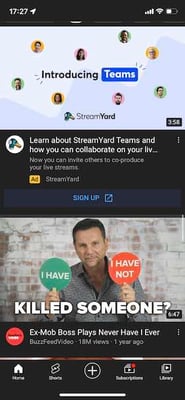 Notice how StreamYard's ad has an eye catching thumbnail and title and shows up on your feed.
Notice how StreamYard's ad has an eye catching thumbnail and title and shows up on your feed.
-
In-Stream ads: These ads show up before, during, or after other videos on the platform and start playing automatically. Most of these ads are skippable after 5 seconds. They can be between 12 seconds – 6 mins in length.
In-Stream video before the start of another video. Notice the adapting aspect ratios.
Because you’re interrupting people who were about to watch another video, make sure you state the problem you solve and show your brand within the first 5 seconds. This will pique the viewer's curiosity and lead them to watch your video instead.
- Make sure you have vertical and horizontal versions of your ads. People watch YouTube on a mix of devices, you should ensure your content looks its best no matter where it's displayed. YouTube will choose the best format based on the viewer’s screen.
- You can connect your business’ YouTube account to Google in order to start attracting an audience based on interests and search keywords. This feature makes YouTube ads most effective for driving purchases, since your potential customers are already searching for a solution to your problems.
- YouTube offers more flexibility in terms of call to action customization, allowing you to send traffic to your landing page, subscribe to your channel, or watch other related videos.
TikTok
TikTok is the king of short form vertical video. Although it's only a couple of years old, it's already reached one billion monthly users, with most of their user base being under 30 years old.
TikTok is quite different from the other platforms because the most successful videos are those that feel authentic and created right in the platform. In contrast, Instagram and YouTube usually have higher production value videos. If you’re going to start advertising in TikTok, you should create videos that feel authentic, since that’s what the audience expects.
A popular style of videos are behind-the-scenes. These give a peek into your company’s culture and how your products are made.
You should also focus on trends that are important to your industry, because that will give you more visibility on the platform.
- To do this, you can search for specific trends in the “Trending” tab, or you can browse around and see what people are creating. Product demos and quick tips are popular in the platform.
- One important caveat with trending videos is that they utilize copyrighted music. With a business account, you can't use copyrighted music as personal accounts can, so you need to find ways to creatively tap into the trends.
-
- For TikTok videos, audio is just as important as the visuals, so you have more opportunities to be creative, knowing that your audience will listen to it.
- Also leverage the different text capabilities to help drive your message and stand out from your competitors.
Example of TikTok Ad. Also, notice how Elsa has successfully targeted me in TikTok and Instagram, increasing my exposure to their message.
Takeaways
Now I understand you went through a lot of info.
If you're unsure of where to begin, the first thing you should do is to look which platforms your audience is in, and brainstorm how you can use the platforms’ features to your advantage.
For example, if your target audience is young and you have an outgoing personality then TikTok might be best to start. Alternatively, if your audience enjoys watching tutorials, and you like creating how-to videos, then YouTube is the place to be.
There's no denying that video is going to rule the business to consumer interactions in the future. By getting started in producing video, you'll avoid missing out on opportunities to grow your brand and to interact with your consumers.
If you follow the best practices laid out in this post, you'll be able to stand out from the competition and earn your customers' attention, regardless of which platform you choose first. Just remember to:
- Cut to the chase
- Use text effectively
- Add a call to action
If you'd like to learn more about how to create a video strategy across multiple platforms to grow your business, check out our Ultimate Guide on Video Lead Generation, which walks you through a step-by-step process to create high-converting videos for your business.
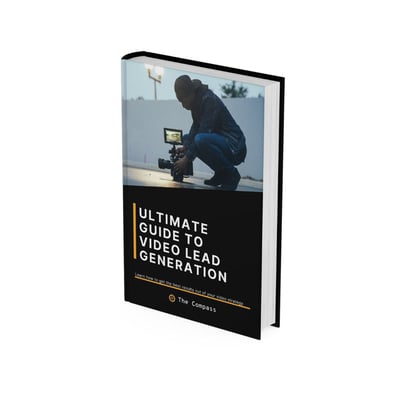

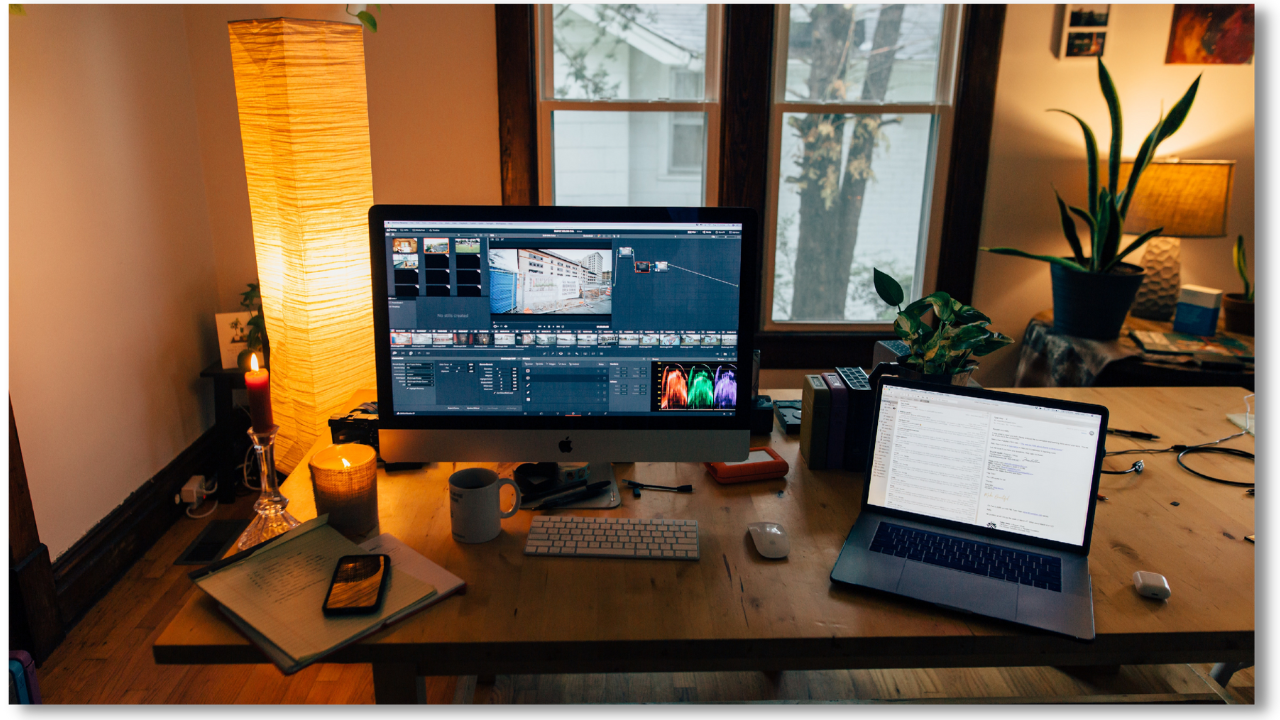

Comments